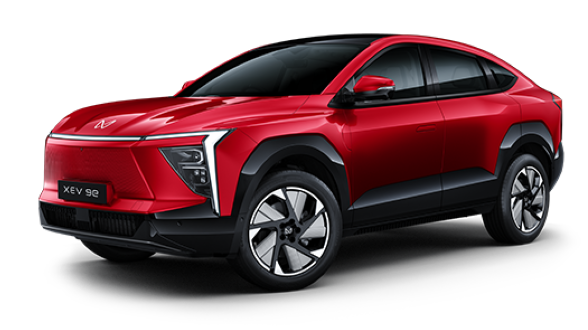AI-enabled autonomous and driverless electric vehicles are revolutionizing the automotive industry with their advanced capabilities and cutting-edge features.
For instance, Tesla’s Model S is equipped with Autopilot, an AI-powered system that uses cameras, radar, and ultrasonic sensors to assist with driving tasks such as lane keeping, adaptive cruise control, and self-parking.
Similarly, the Porsche Taycan leverages AI for battery aging prediction, adaptive cruise control, and predictive navigation, ensuring optimal performance and efficiency.
In India, the MG ZS EV, Mahindra’s XEV 9e and the recently announced Hyundai Creta Electric are incorporating AI-driven features like Advanced Driver Assistance Systems (ADAS) to enhance safety and driving experience.
These AI technologies enable vehicles to perceive their surroundings, make real-time decisions, and navigate safely, paving the way for a smarter, more efficient, and environmentally friendly future.
Additionally, autonomous vehicles like Waymo’s robotaxis are setting new standards in autonomous driving by providing reliable, practical, and user-friendly transportation with their advanced AI systems.
AI-Powered Search and Navigation
Let’s start with AI-powered search and navigation. Picture this: You’re driving your Tata Nexon EV Max, and you suddenly crave a cup of coffee.
Instead of fumbling with your phone, you simply ask your car, “Hey Tata, find me the nearest coffee shop serving Kodagu coffee and with the best reviews.”
Within seconds, your car’s AI-powered search engine pulls up a list of top-rated coffee shops nearby and navigates you to the closest one. No more getting lost or settling for mediocre coffee.
Advanced Driver Assistance Systems (ADAS)
Next up, ADAS. Imagine your Mahindra XEV 9e EV equipped with AI-driven ADAS that can handle complex traffic situations, identify hazards, and make real-time decisions.
From adaptive cruise control to lane-keeping assist, these systems ensure a safer and more comfortable driving experience. Given India’s notorious traffic conditions, this feature is becoming a major boon for some regular roadies.
Battery Management
One of the biggest concerns for EV owners is the health and longevity of their vehicle’s batteries. Enter AI-powered battery management systems.
Take the Porsche Taycan, for example. This sleek sports car uses AI algorithms to monitor the battery’s health, predict its lifespan, and optimize charging cycles.
The result? A longer-lasting battery and fewer trips to the service center. Plus, the AI can even predict when your battery might need a little TLC, so you can avoid any unexpected breakdowns.
Charge Management
Now, let’s talk about charge management. Imagine your EV is smart enough to know the best times to charge based on electricity prices and grid demand. The Audi e-tron already offers a glimpse into this future.
With AI-driven charge management, the e-tron can schedule charging sessions during off-peak hours when electricity is cheaper, saving you money and reducing strain on the grid. It’s like having a personal energy manager in your car!
Locating Public Chargers
Finding a public charger can be a hassle, but not with AI on your side. General Motors is using AI to determine the best locations for new EV chargers.
By analysing traffic patterns, population density, and current charging station locations, GM’s AI can suggest optimal spots for new chargers, ensuring better coverage and convenience for EV owners.
No more driving around aimlessly, hoping to stumble upon a charging station.
Optimized Charging Costs
Finally, let’s talk about optimizing charging costs. AI can analyse real-time data on energy prices, grid load, and your driving habits to recommend the most cost-effective charging times.
For instance, BYD, the world’s largest electric car manufacturer, has its Xuanji smart car system that has cutting-edge artificial intelligence (AI) capabilities.
Tesla uses AI-enabled software for battery and charging management and can optimize charging schedules to take full advantage of its Supercharger network, ensuring you get the best bang for your buck. It’s like having a financial advisor for your car’s energy needs.
Caveat
Of course, with all this AI-powered tech, there might be some amusing moments. Imagine your car’s AI getting a bit too enthusiastic about saving energy and suggesting you take a detour through a scenic route to avoid traffic.
The integration of AI-powered features in electric vehicles promises to revolutionize the way we drive, charge, and maintain our cars.
From smarter navigation and battery management to optimized charging costs and better access to public chargers, the future of EVs is bright—and a little bit quirky.
So buckle up and get ready for a ride into the future, where your car is not just a vehicle but a smart, witty companion.
About the Author
Anirban is a journalist and editor tracking India’s EV ecosystem and its impact on the climate economy.






Leave a Reply